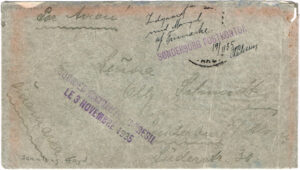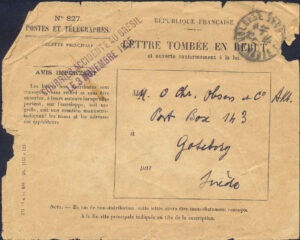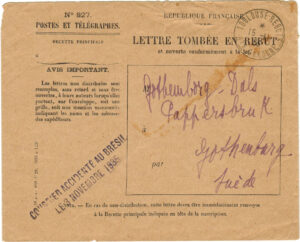| Crash site | Aracaju, Brazil |
| Airline | Air France |
| Aircraft | Latécoère 28-1 – F-AJIQ – Brisa do Terra |
| Route | Santiago de Chile – Buenos Aires – Rio de Janeiro – Salvador de Bahia – Natal – Dakar – Paris |
| Crew | 4 – no survivors |
| Passengers | 0 |
The crash
The mail plane left Salvador de Bahia on 4 November 1935. A few minutes after the departure the pilot informed the control center that everything was OK on board, but shortly after there was no more contact with the plane.
Two other planes searched along the coast for around 24 hours. Finally they discovered debris and some mail bags on a small beach near Aracaju where the plane had crashed into the sea.
The reason for the crash has never been determined.
The mail
In total 17 mail bags were recovered. The bags were brought back to Salvador de Bahia by car and then by plane to Natal. The mail for Europe was flown direct from Natal to Toulouse, France by the famous French pilot Jean Mermoz in the Blériot “Santos Dumont”. The mail arrived in Toulouse on 13 November. From here the mail was forwarded to the other European countries.
The French authorities produced a 2-line handstamp which can be seen on most of the mail. Badly damaged mail was forwarded in the standard French service cover (No 827).
I have recorded a few covers addressed to Denmark and Sweden. These were sent from Argentina, Chile or Uruguay. No special Nordic markings have been recorded.
A.
French handstamp used in Toulouse.
Violet.
Size: 64 x 11 mm.
Note the date “3 NOVEMBRE 1935” which is wrong.
Plane crashed 4 November.
B.
Danish manuscript marking applied at the
Sønderborg Post Office.
“Arrived without stamp / handstamp / 19/11 35 H. Pedersen“
Examples of mail








